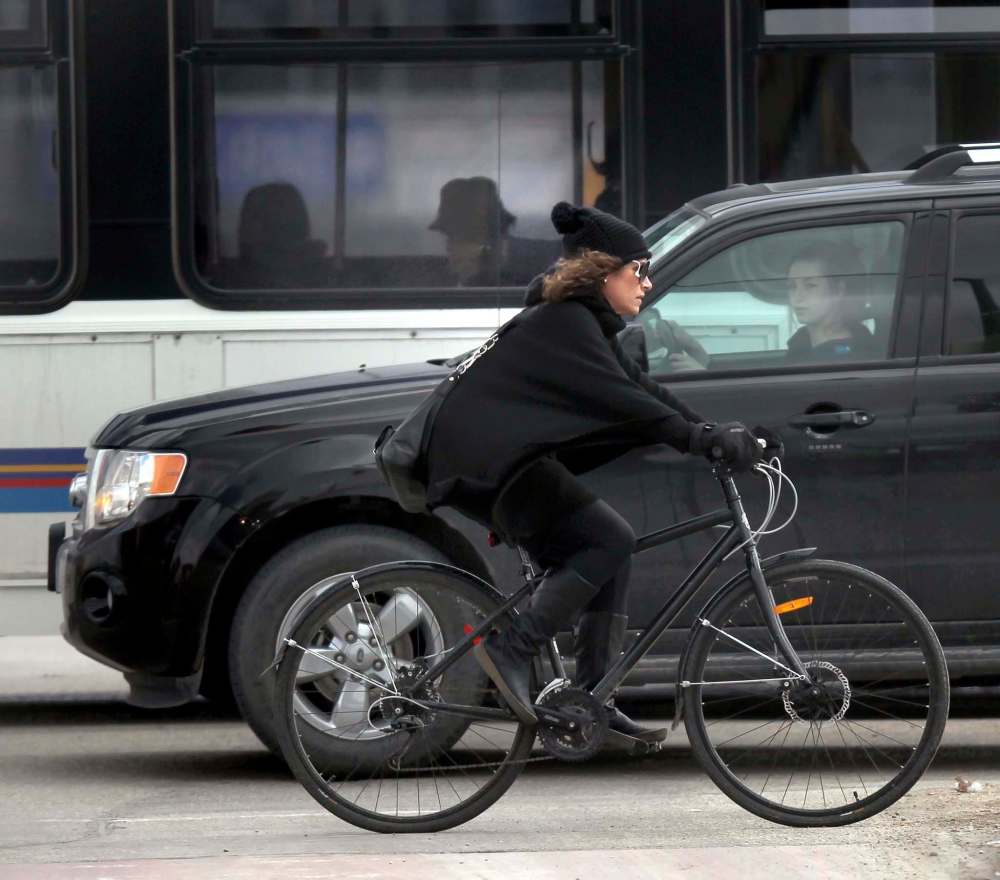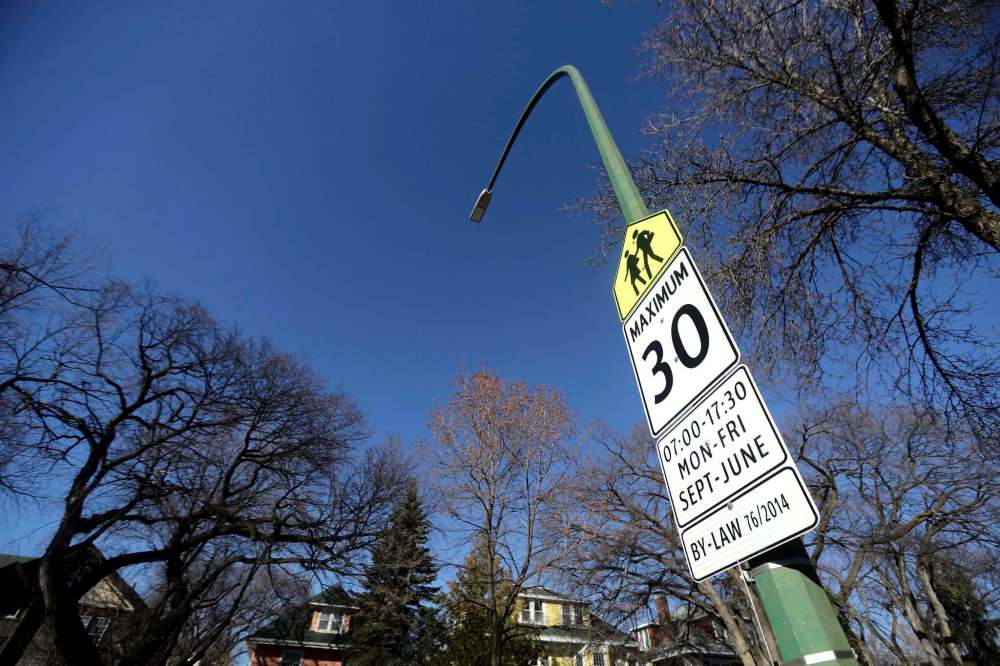On our streets, there’s safety in numbers
Facts show roads are less dangerous, despite residents' belief otherwise
Advertisement
Read this article for free:
or
Already have an account? Log in here »
To continue reading, please subscribe:
Monthly Digital Subscription
$0 for the first 4 weeks*
- Enjoy unlimited reading on winnipegfreepress.com
- Read the E-Edition, our digital replica newspaper
- Access News Break, our award-winning app
- Play interactive puzzles
*No charge for 4 weeks then price increases to the regular rate of $19.00 plus GST every four weeks. Offer available to new and qualified returning subscribers only. Cancel any time.
Monthly Digital Subscription
$4.75/week*
- Enjoy unlimited reading on winnipegfreepress.com
- Read the E-Edition, our digital replica newspaper
- Access News Break, our award-winning app
- Play interactive puzzles
*Billed as $19 plus GST every four weeks. Cancel any time.
To continue reading, please subscribe:
Add Free Press access to your Brandon Sun subscription for only an additional
$1 for the first 4 weeks*
*Your next subscription payment will increase by $1.00 and you will be charged $16.99 plus GST for four weeks. After four weeks, your payment will increase to $23.99 plus GST every four weeks.
Read unlimited articles for free today:
or
Already have an account? Log in here »
Hey there, time traveller!
This article was published 22/10/2018 (2585 days ago), so information in it may no longer be current.
In the face of obvious signs of progress, why would people be so skeptical?
A recent Free Press-Probe Research poll, which is part of a series of polls on civic election issues, showed that 40 per cent of Winnipeggers believe they are less safe on or around city roads than they were 10 years ago. In contrast, only 14 per cent of respondents said they feel safer.
It’s a remarkable result, considering that by all reasonable measurements, we’ve never been safer.

On average, five Winnipeg pedestrians die each year in traffic collisions and another 14 die behind the wheel of their cars. Losing nearly 20 lives every year is still worrisome, although both are down considerably from previous decades.
It’s part of a national trend. In 1997, Transport Canada figures show that 2,660 people died in traffic collisions; by 2016, that number had fallen to 1,717. Again, a horrible loss of life, but a glimmer of hope in terms of the trend line.
It all adds up to progress. Why, you might ask yourself, would people feel less safe? That’s really hard to tell.
In the final analysis, it’s an age-old triumph of intuition over hard numbers.
Psychologically, we somehow can’t connect the dots between advances in automobile safety technology (airbags, lane departure and collision warning systems) and improvements in infrastructure and planning (breakaway light poles, improved safety curbs, active transportation and dedicated bike lanes, school-zone speed limits) and overall traffic safety.
It doesn’t mean our roads are safe, per se. But we’re moving in the right direction. That having been said, more could be done.
Traffic-safety advocates have pointed out that the city needs to be more aggressive in pursuing improvements through the Vision Zero initiative. This Swedish-made, now-international advocacy campaign is aimed at convincing elected officials at all levels to adopt leading-edge road-safety innovations.
Local advocates for Vision Zero (referred to as Toward Zero in Winnipeg) believe there has been progress, but would like to see the city move more quickly to implement changes. Resources for those changes, however, remain a challenge.
The former NDP government did toy with the idea of using money from MPI for road-safety infrastructure. The theory was that fixing dangerous stretches of roadway or intersections would prevent collisions and reduce insurance rates. It’s a strategy that private insurers have used for decades.
In the end, however, the NDP caved to political pressure and shelved the idea. They found out what city councillors already knew: voters would prefer to see their tax money spent paving roads than fixing dangerous intersections.
And therein lies the problem for the elected officials who are supposed to make progress on an issue such as road safety.
Citizens feel less safe on our roads, despite evidence to the contrary. But when you introduce an initiative that could save lives, those same citizens rail against it and force you to back down.
Politicians rarely get any sympathy from voters. But for a moment, couldn’t we all feel sorry for them for this damned-if-you-do, damned-if-you-don’t dilemma?
You can be sure that the dozens of people vying to fill a seat on Winnipeg city council have already figured out that on many issues such as road safety, you just can’t win.

Road safety has not been a high-profile issue in the civic election campaign, and perhaps it should have been. However, there is almost no benefit for an incumbent to raise the issue.
Anyone running for re-election knows that confronting road safety would force them to spout meaningless statistics about the slow decline in fatalities or highlight unconvincing improvements to infrastructure and traffic design, exactly the kind of things that do not give voters any comfort in the face of their intuitive, but unfounded, fears.
Mayor Brian Bowman said as much last weekend in a story on road safety. In his bid for re-election, Bowman admitted he hasn’t been motivated to raise road safety because he supports Toward Zero and nothing has changed his commitment.
Why wouldn’t Bowman trumpet his support for Toward Zero and pledge to do more? Although he did not have the Free Press poll results in hand, it seems he had already figured out that voters feel the roads are less safe and no amount of fact is going to change that.
The poll results do, however, show that challengers may have missed a glorious opportunity to attack Bowman and incumbent councillors. They certainly use that strategy on just about every other issue.
Challengers in civic elections are constantly telling voters to forget the numbers and what they show us about the city’s finances (which have steadily improved) or the infrastructure deficit (down $3 billion in the last term), or the state of the city’s population and economy (both growing above national averages). Challengers want you to give in to your deepest-held preconceptions about civic government, which is that it is bad at everything.
There are lots of things that need improving at city hall. But there are also a good number of things that have improved. It’s the same story for every level of government.
In case you were wondering, this is not the kind of scenario that ensures we are getting the best people elected. Our own refusal to take comfort in facts leaves us open to being manipulated by negative hyperbole. It’s also what discourages so many citizens from voting.
This is a situation that will never improve until voters leave their guts out of the equation, and begin to base their decisions about who to vote for, and whether to vote at all, on hard facts.
dan.lett@freepress.mb.ca

Dan Lett is a columnist for the Free Press, providing opinion and commentary on politics in Winnipeg and beyond. Born and raised in Toronto, Dan joined the Free Press in 1986. Read more about Dan.
Dan’s columns are built on facts and reactions, but offer his personal views through arguments and analysis. The Free Press’ editing team reviews Dan’s columns before they are posted online or published in print — part of the our tradition, since 1872, of producing reliable independent journalism. Read more about Free Press’s history and mandate, and learn how our newsroom operates.
Our newsroom depends on a growing audience of readers to power our journalism. If you are not a paid reader, please consider becoming a subscriber.
Our newsroom depends on its audience of readers to power our journalism. Thank you for your support.

